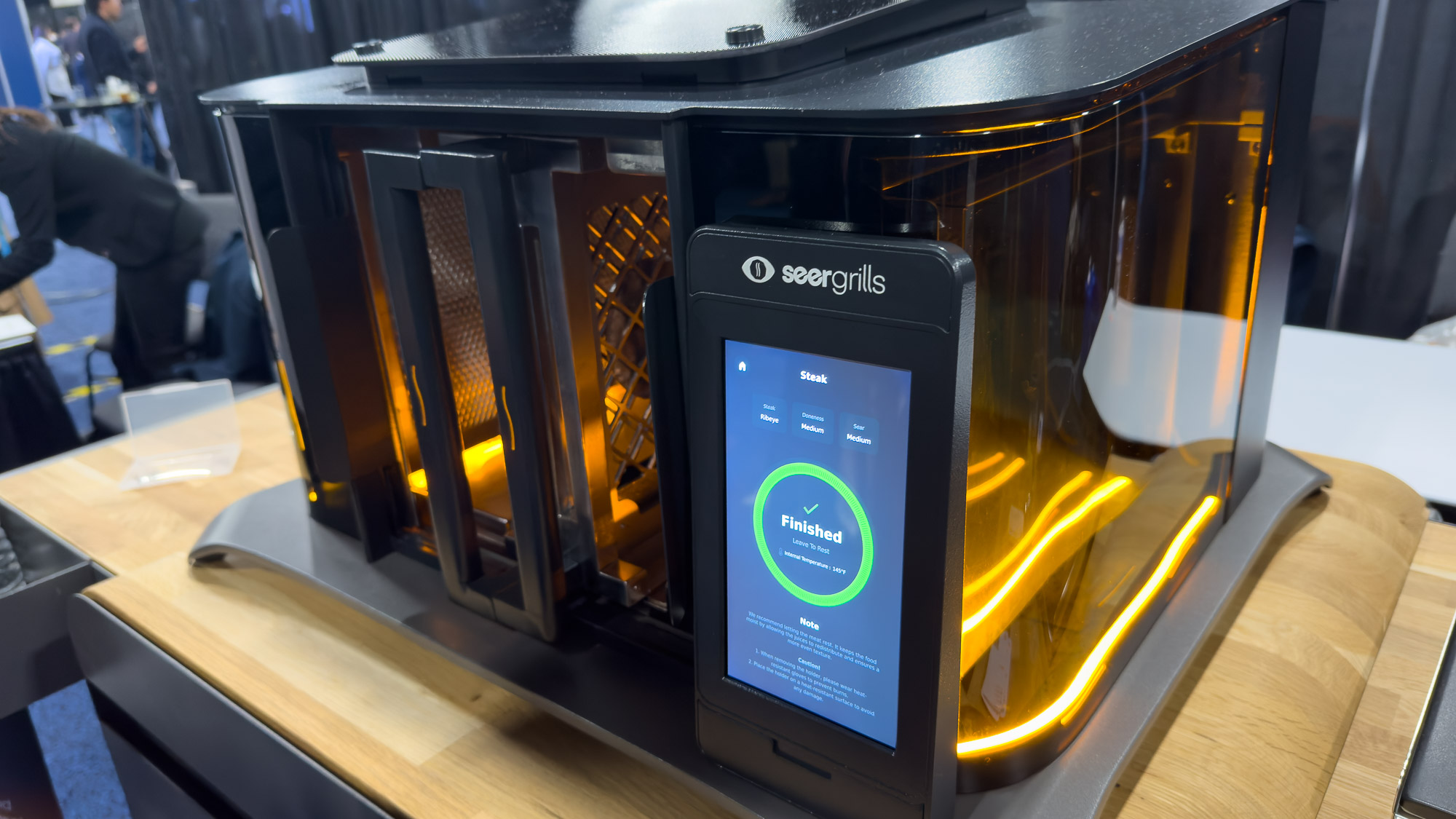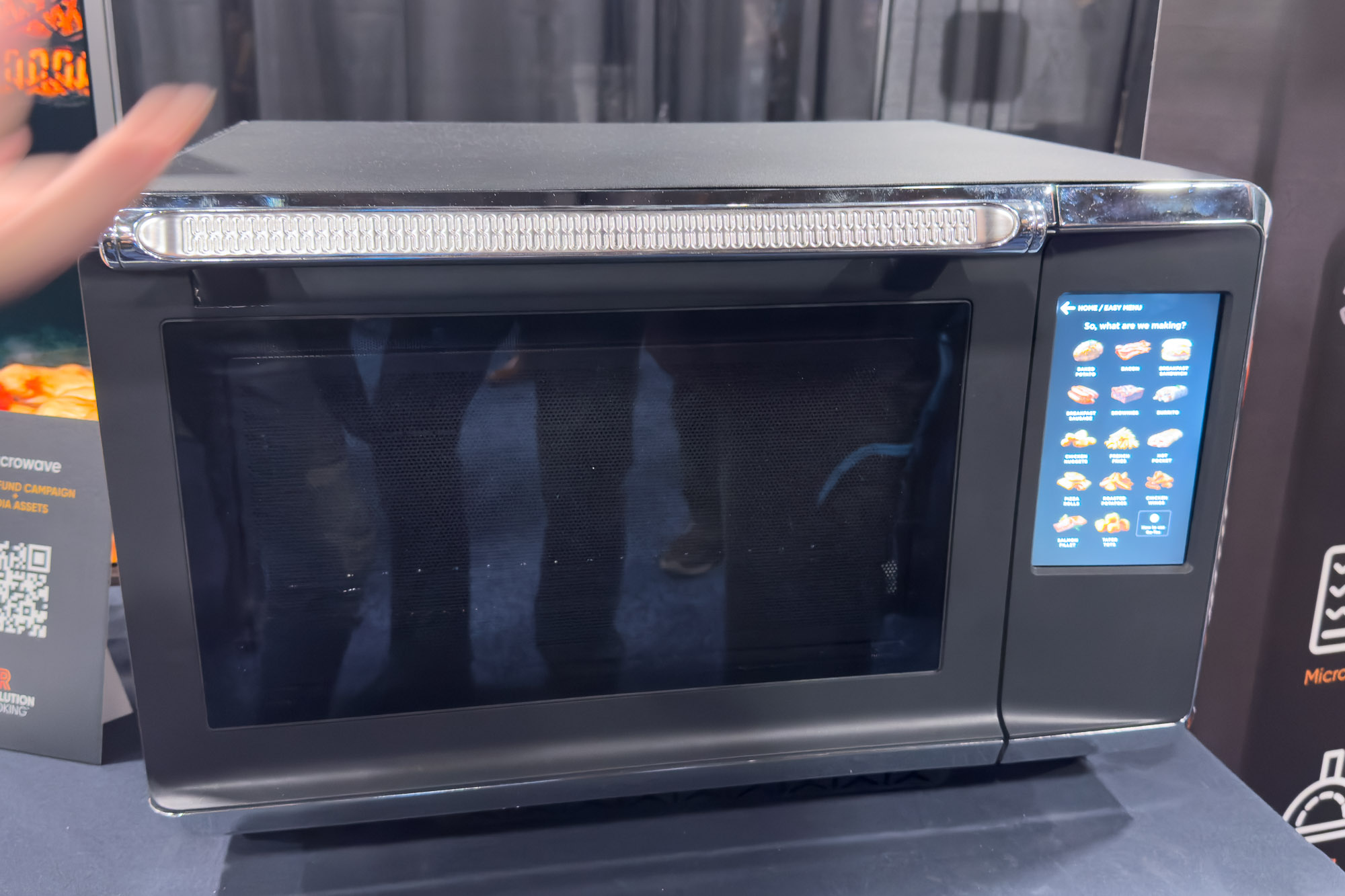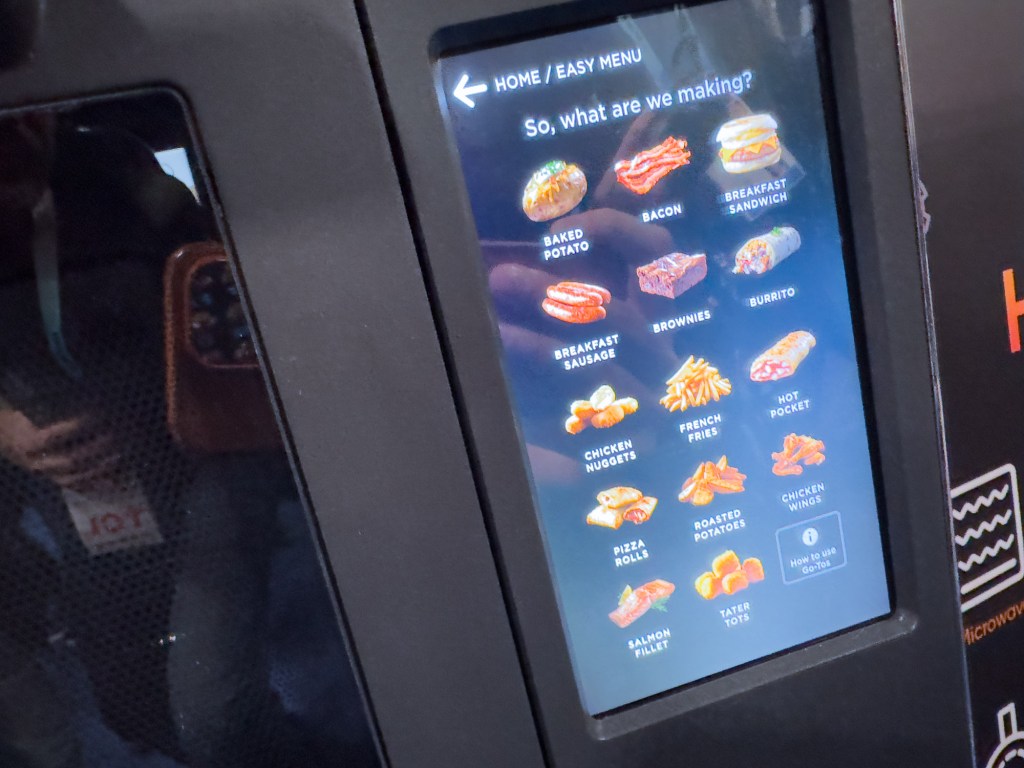Wandering around the CES preview events, it’s clear that AI and other smart tech is coming to toasters, grills and all sorts of other devices. As someone who loves to cook, it’s possible that these products aren’t really for me, but I can’t help but think that a bunch of smart tech built into small home appliances is going to be a disaster for the planet.
Burn, baby, burn
Seer Grills’ Perfecta is one such example. It’s a propane grill with AI smarts that claims to be the world’s fastest grill.

“We can cook a one-inch ribeye steak in about 1 minute and 45 seconds” says Jordan Aspley, the company’s founder. “We have two dual, vertical infrared burners that cook at 1,652°F. It cooks both sides of the steak at the same time — it’s basically a toaster for steaks”
The company is opening for preorders in the next few days, and the grill retails at $3,500.
Wave, baby, wave
Another device shown off at CES 2024 is the “Macrowave” from Revolution Cooking. The company’s previous product was a $400 toaster. Now, it’s back with a device that it calls the “macrowave.” It’s an air fryer, toaster oven and microwave all in one, using the same fast “InstaGlo” heating element it developed for its toaster.

“Frozen food was really my big problem. Things like frozen burritos. The instructions are, you know, defrost in your microwave, preheat your oven, take it out of the microwave, put it in your oven. Or if I went just with the microwave, it would just explode. So we know that microwave ovens are great technology, but it wasn’t designed to cook. It’s designed to heat things up. And what we saw when we invented InstaGLO, which is our platform technology for the toaster, was it was an extensible platform that we can actually put into a larger cavity,” says Tom Klaff, CEO at Revolution Cooking, in an interview with TechCruch at CES 2024 in Las Vegas. “The idea was to make microwaves the hero: Let’s make the microwave do what it’s supposed to. With the microwave, it’s got the best qualities of what a microwave does, which is heat up food fast, and InstaGlo, which heats up really, really fast, efficiently and projects infrared heat directly to crisp.”
All very clever, but carrying an $1,800 price tag is a hell of a thing, even for a fancy multifunction device such as this. It made me wonder, why does everything need to be smart and connected? For a toaster, you need to walk over and put toast in the device anyway, so is it really such a hardship to press a button to get everything started?
The Revolution Cooking team suggests that it’s crucial, because you can get software updates for your toaster. Yes. Software updates. For your toaster.
“You know, there are things that we’ve wanted to add to it over time that we couldn’t because it wasn’t connected, just to deliver a better experience,” says Klaff. I pushed him on what sort of updates you’d need. “For the toaster, we added new panini press algorithms, so we can continually add more creations around that. Our customers are asking us for different varieties of bread that toast a little bit differently than what we have currently. So it’d be great to add those, too.”
Quite apart from the glorious phrase “panini algorithm,” and despite the fact that I love tech as much as the next person, I can’t really see the point myself. In a world where you can buy a $25 Amazon Basics toaster, I’m struggling to see how Revolution Cooking’s $400 toaster can add 25x more value. Or, come to think of it, when you can get a microwave for $100 and a toaster oven that can be used as an air fryer for another $140, how it makes sense to pay 7x more for a macrowave.
How long will they last?
Is there anything wrong with a $3,500 grill, a $400 toaster or an $1,800 not-just-a-microwave? No, by all means, if you have the money to do it, go for it. The problem with a lot of these products, however, is that they seem to be relatively minor improvements over the existing products, “solving” for a problem that doesn’t truly exist. That, in itself, isn’t an issue — nobody is forcing consumers to fork out 25x more for a product.
Where I really get my heckles up with “smart” products, however, is that heat and electronics rarely mix well, and the longevity of some of the companies building these types of products can get wonky. One example is Spark One — the $1,100 smart grill we featured in our 2020 gift guide — which went out of business by 2022. In theory, it was a great design (I know the founder well — Hi Ben! — and they did build something unique), but the company didn’t make it, leaving god-knows-how-many of their grills unusable: Without the special charcoal “briq” inserts, the grills are essentially useless, relegating the grills to landfills after less than a couple of years.
This is my fear with a lot of the products I see at CES: Great ideas, but if they don’t have the longevity of the products they replace — I still use a toaster oven from the mid-1990s, and I still have a Vitamix that I believe was built in the 1970s and was so over-engineered that it seems to refuse to give up the ghost — we are merely accelerating our pattern of consumption. Even the products that claim to be eco-friendly aren’t if they aren’t repairable (because the companies go out of business) or, worse, stop working altogether when a consumable stops being available.
































Comment